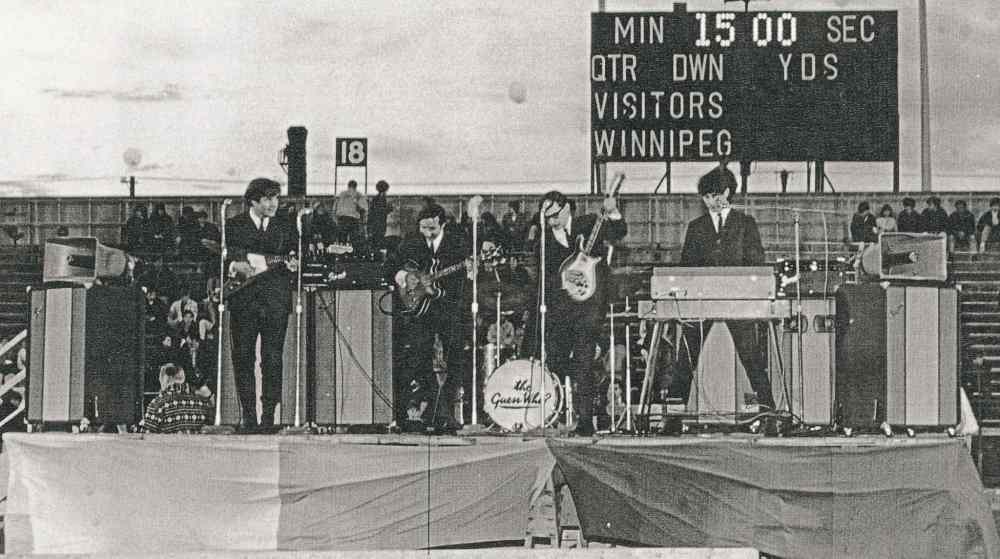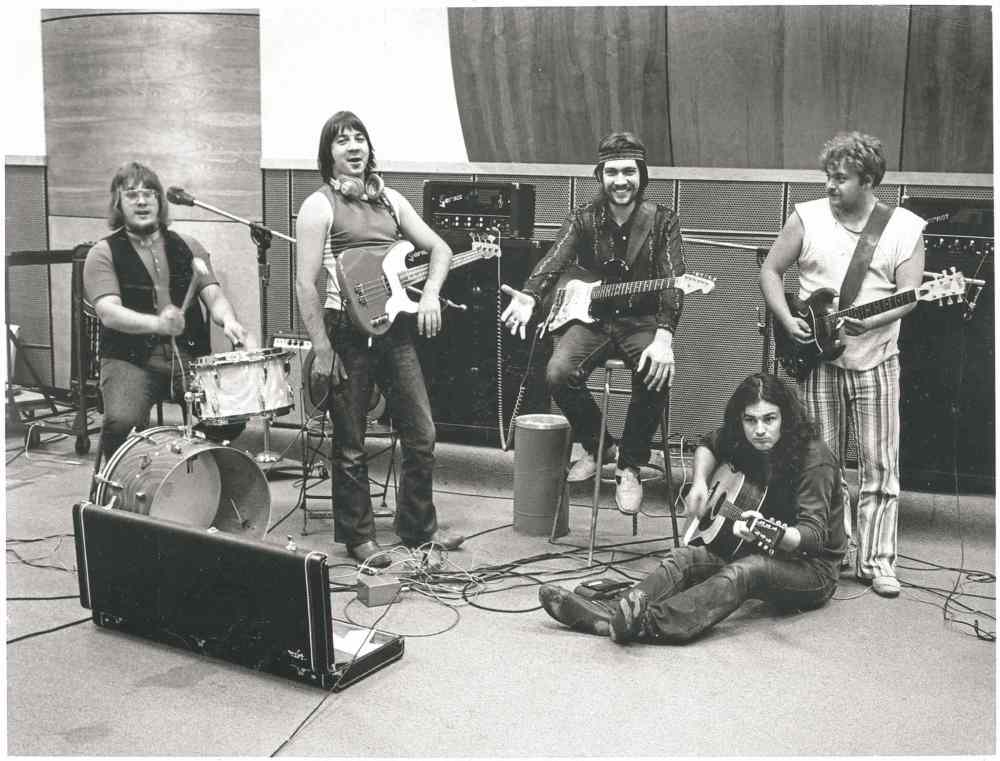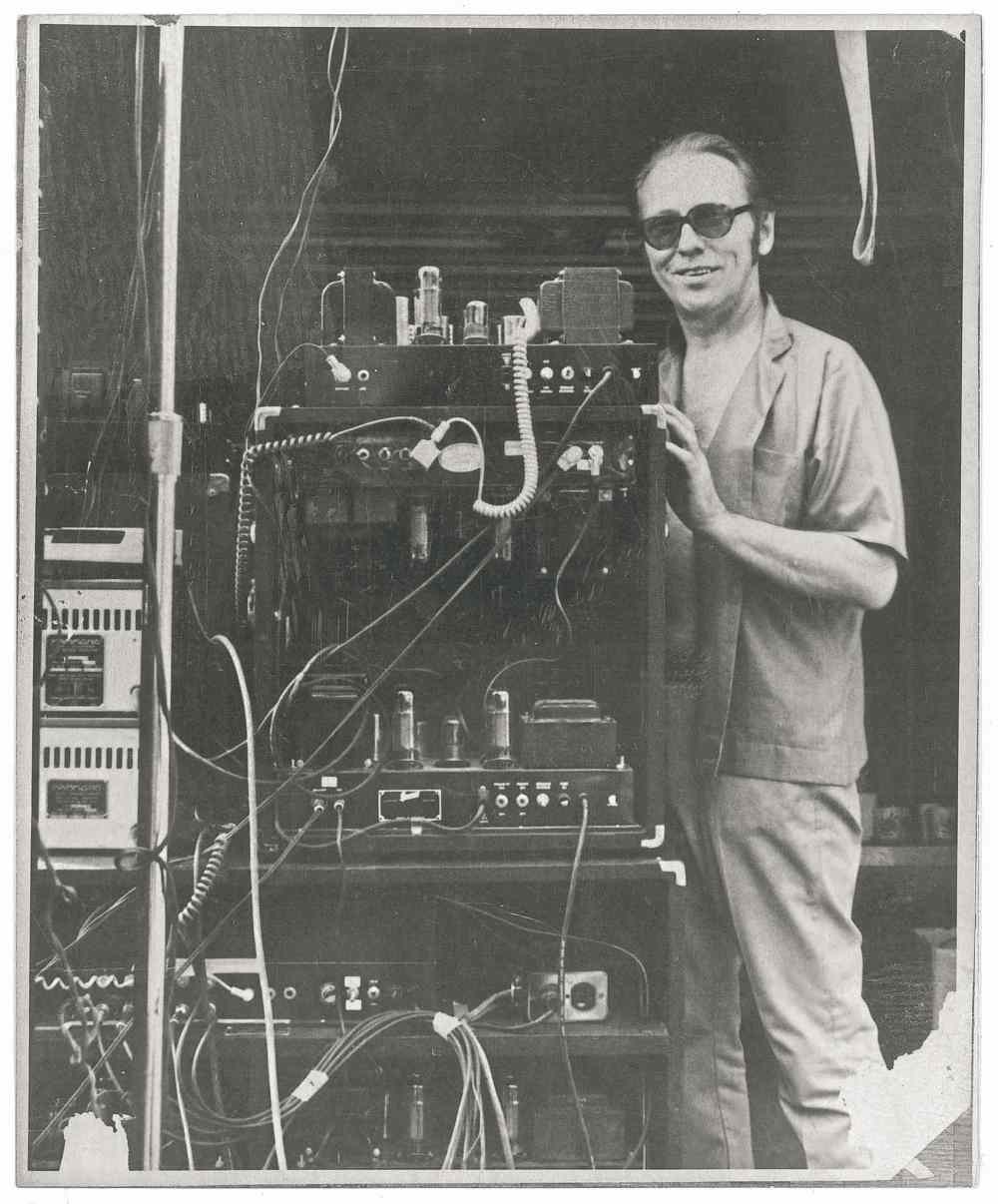Sound by GARNET
Winnipeg's patron saint of rock 'n' roll drove city's sound
Advertisement
Read this article for free:
or
Already have an account? Log in here »
To continue reading, please subscribe:
Monthly Digital Subscription
$1 per week for 24 weeks*
- Enjoy unlimited reading on winnipegfreepress.com
- Read the E-Edition, our digital replica newspaper
- Access News Break, our award-winning app
- Play interactive puzzles
*Billed as $4.00 plus GST every four weeks. After 24 weeks, price increases to the regular rate of $19.00 plus GST every four weeks. Offer available to new and qualified returning subscribers only. Cancel any time.
Monthly Digital Subscription
$4.75/week*
- Enjoy unlimited reading on winnipegfreepress.com
- Read the E-Edition, our digital replica newspaper
- Access News Break, our award-winning app
- Play interactive puzzles
*Billed as $19 plus GST every four weeks. Cancel any time.
To continue reading, please subscribe:
Add Free Press access to your Brandon Sun subscription for only an additional
$1 for the first 4 weeks*
*Your next subscription payment will increase by $1.00 and you will be charged $16.99 plus GST for four weeks. After four weeks, your payment will increase to $23.99 plus GST every four weeks.
Read unlimited articles for free today:
or
Already have an account? Log in here »
Hey there, time traveller!
This article was published 21/12/2014 (3961 days ago), so information in it may no longer be current.
This Tuesday marks the eighth anniversary of the passing of Thomas Garnet “Gar” Gillies, the man who created the sound of Winnipeg rock in the 1960s, a sound that shook the world by the early 1970s.
From the mid-1960s until 1989, Garnet amplifiers and PA systems, made right here in Winnipeg, represented the apex of sound, size and power.
As a teenager, there were three places I loved to hang out: Winnipeg Piano on the corner of Portage Avenue at Edmonton Street, the Record Room just half a block east, and Cam’s Musical Supply out on Ferry Road in St. James. All three are long gone now. While I generally annoyed the sales clerks at the first two establishments, the genial, middle-aged man in suspenders, half-glasses and suede Beatle boots at Cam’s always had time for me. Gar Gillies had time for everyone, and that’s why his was a very special place for every musician, whether novices such as me or local rock gods.

I first met Gar in the 1950s. My dad knew him through some Gimli connections — Gar being of Icelandic descent — and my parents bought all their appliances from Gar’s shop, Cam’s Electrical Appliances at 859 Sargent Ave. Gar was also a well-known musician and bandleader in the heyday of the big bands. I recall going there as a youngster and seeing Gar, in white shirt and sensible slacks, joking around with Dad calling him a “Goolie” (a slang term for Icelanders). I started playing guitar in 1965 and the following year begged Dad for an amplifier larger than the Harmony model we had purchased for $50 from Eaton’s. He took me to see Gar, now operating out of a shop at the corner of Osborne Street and Morley Avenue. Somehow he knew Gar was in the amplifier business.
Walking into the shop, I instantly stopped dead in my tracks and stared wide-eyed. There before me stood Eddie and Jerry LeClair from the Luvin’ Kind, all long hair, groovy Stag Shop shirts, jeans and Beatle boots. Between them was Gar, decked out in equally hip duds, talking the talk with the rockers, peppering the odd phrase with an “F-sharp” or two. I was in heaven. Gar showed Dad and I a Garnet prototype, a single cabinet unit boasting 30 watts with controls at the back, one 15-inch speaker and a driver horn. It even had a built-in fuzz tone called a Stinger. Dad cut a cheque for $175 and I left with my very first Garnet amplifier, one of several I would own over the next five years — much to the envy of my rock ‘n’ roll peers.
Gar’s transformation from fridges and televisions to rock amplification came at the behest of the early Guess Who. They had complained to road manager Russell Gillies their Fender amplifiers just couldn’t cut it in the larger venues they were playing by 1965. Russell’s dad, Gar, an acknowledged vacuum-tube expert, began boosting their Fender Bandmasters and Bassmans with bigger tubes before custom-building his first Garnet amplifiers for the group. “When other bands saw us using these cool, big amps they wanted them, too,” notes guitarist Randy Bachman of the Guess Who and Bachman Turner Overdrive fame. “That’s how the Garnet Amplifier Company began. Eventually he stopped selling and repairing electrical appliances and went exclusively into amplifier-making.” The band toured the world using locally made Garnet gear. “We became synonymous with Garnet equipment,” states the Guess Who’s Jim Kale.
By 1967, Gar was building and selling Garnet Amplifiers out of a shop at 611 Ferry St. in St. James. It was big a risk. While everyone needed furniture and television sets, that was simply not the case with guitar amplifiers. Nevertheless, he recruited his sons, Russell and Garnie, and hired a crew to mass-produce several models of amplifiers, from the BTO (100 watts) and Pro (50 watts) professional series to the smaller Rebel and Lil’ Rock line. I had graduated to a Pro model. Every band in the city was sporting Garnet gear exclusively by 1968, with the humungous BTO (for Big-Time Operator) the tallest, loudest, toughest amplifiers this side of the Atlantic. A line of BTOs onstage behind you was the ultimate in cool and a “Sound by Garnet” T-shirt de rigueur for local players. I wore mine with pride.
‘His passion
for getting the young guys
playing
was amazing’
“The first real amplifier I ever saw was a Garnet Pro that my pal Marvin Finkle got as a bar mitzvah present,” recalls Bill Kroeber, bass player with ’70s Winnipeg band Charles Baker Harris. “He hooked it up and blew all our little 13-year-old faces off. Garnets had the look of a serious rock amp.”
“The great thing about Gar was that, being a musician himself, he gave every musician credit,” recalls Bachman. “If you gave him five bucks a week or five bucks a month he was happy. That was something no one else gave us, and every band in Winnipeg is indebted to him for that attitude.” The patron saint of Winnipeg rock ‘n’ roll, Papa Gar had a heart of gold. “Gar would just about take your bottle or hub-cap collection on trade for what you needed,” recalls the Orfans’ Paul Loreque. “His passion for getting the young guys playing was amazing.” But musicians being what they are, sometimes the debts went unpaid. “Gar never got rich,” states Kale, “but he had this built-in empathy for the plight of the young rock ‘n’ roll guys.”
In the early ’70s, the Guess Who toured the world delivering their self-styled “Wheatfield Soul” from an imposing wall of Garnet BTOs in concert halls and arenas from Toronto to Tokyo. Bachman’s distinctive lead guitar sound on No Time and American Woman was the result of Gar’s ingenious innovation, a pre-amp dubbed the Herzog. Developed exclusively for Bachman, it became the signature sound of the Guess Who. “My guitar licks came from Lenny Breau and my guitar sound came from Gar Gillies,” acknowledges Bachman.
As if building amps wasn’t enough, Gar produced recordings by the Deverons, his sweet trombone gracing their version of She. And that’s him on the solo in the Guess Who’s 1966 hit His Girl. Gar loved being around young musicians, but it took a toll on his family, who rarely saw him. It also affected his health.
Despite operating a thriving business, Gar still had time for “the little Goolie” and I would again stand wide-eyed staring at all the photos on the upstairs walls with sincere ‘thank-yous’ from dozens and dozens of bands scrawled on them. One was even from California’s legendary Buffalo Springfield with the words, “To Gar, thanks for the amps. Neil Young.”

In 1974 Garnet amplifiers expanded into the highly competitive U.S. market. Production ramped up as Gar signed deals with Gibson and other names to manufacture amplifiers and sound gear. But by then, tube amplification was being supplanted by cheaper solid-state transistors. “You couldn’t get that warm sound with transistors,” explains Garnie. “We probably didn’t switch to solid-state fast enough because Dad hated them.” It would prove a costly miscalculation, and by 1989, Garnet Amplifiers had closed shop. Too restless to remain retired for long, in the 1990s Gar opened up a tiny repair shop on St. Matthews Avenue. His early amps were now treasured collector’s items with owners seeking out the man himself for repair tips. An acknowledged expert on tube amplification, Gar authored a book, The How & Why of Guitar Tube Amps. He even found time to record a CD featuring his trombone-playing.
After many years, in 2001 I took the opportunity to visit Gar. As I entered his shop cluttered with tubes, wires and cabinets, a familiar voice greeted me. “Hey, it’s the little Goolie!” A mural dedicated to Gar was unveiled on the side of the building at 1349 Portage Ave. in 2003. Following a prolonged battle with cancer, Gar died in 2006.
“Nowadays original Garnet amps are very collectible and go for big bucks,” says Bachman. “There are serious Garnet collectors out there.” The Garnet amplification legacy is being carried on by Winnipegger Pete Thiessen who, with Gar’s blessing, continues to manufacture and sell Garnet products using Gar’s original schematics. “It’s a responsibility I take very seriously,” states Thiessen.
For further information on Garnet Amplifiers go to www.garnetamps.com.

Born and raised in Winnipeg, music historian John Einarson is an acclaimed musicologist, broadcaster, educator, and author of 14 music biographies published worldwide.
Our newsroom depends on a growing audience of readers to power our journalism. If you are not a paid reader, please consider becoming a subscriber.
Our newsroom depends on its audience of readers to power our journalism. Thank you for your support.


